Three points A,B,C lie in a uniform electric field E of 5×103N/C as shown in Fig. Find the potential difference between A and C.

In fig as B and C are in same verticale line, therefore VB=VC
Now, potenital difference between A and C = potential difference between A and B
VAC=VAB=−E(Δx)
Now, Δx=AB=√AC2−BC2=√52−32
=4cm=4×10−2m
∴VAC=−5×103×4×10−2
=−200V
Similar Questions
A uniform electric field exists in x y plane as shown in Fig. 3.45. Find the potential difference. Between origin O and A(d,d,0).
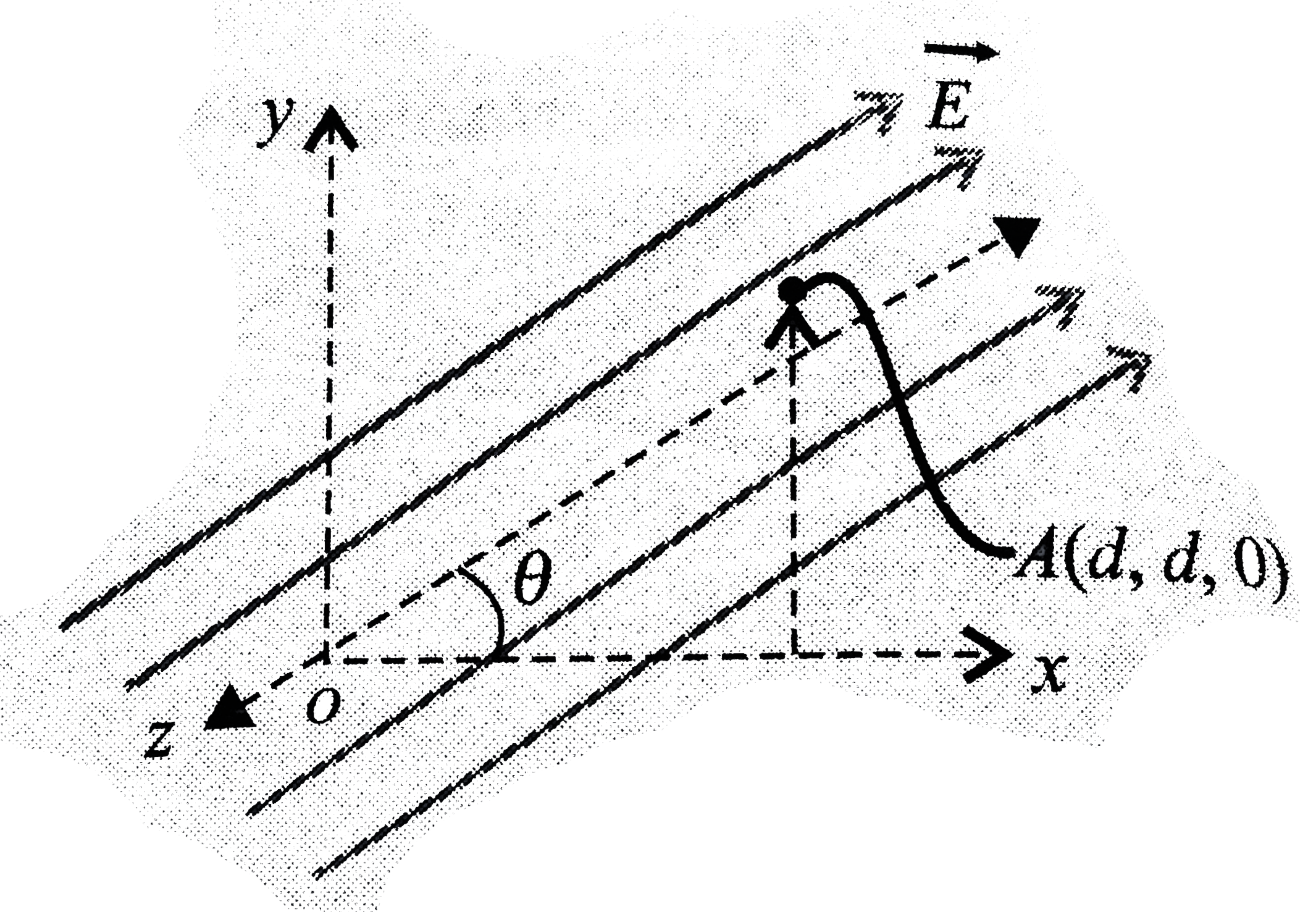 .View Solution
.View SolutionA test charge q is moved without acceleration from A to C along the path from A to B and then from B to C in electric field E as shown in Fig. (i) Calculate the potential difference between A and C (ii) At what point [of A and C] is the electric potential more and why?
 View Solution
View Solution
Knowledge Check
- Question 1 - Select One
Consider a unifrom electric field in a region as shown below. Then, potential difference between points A and C is given by
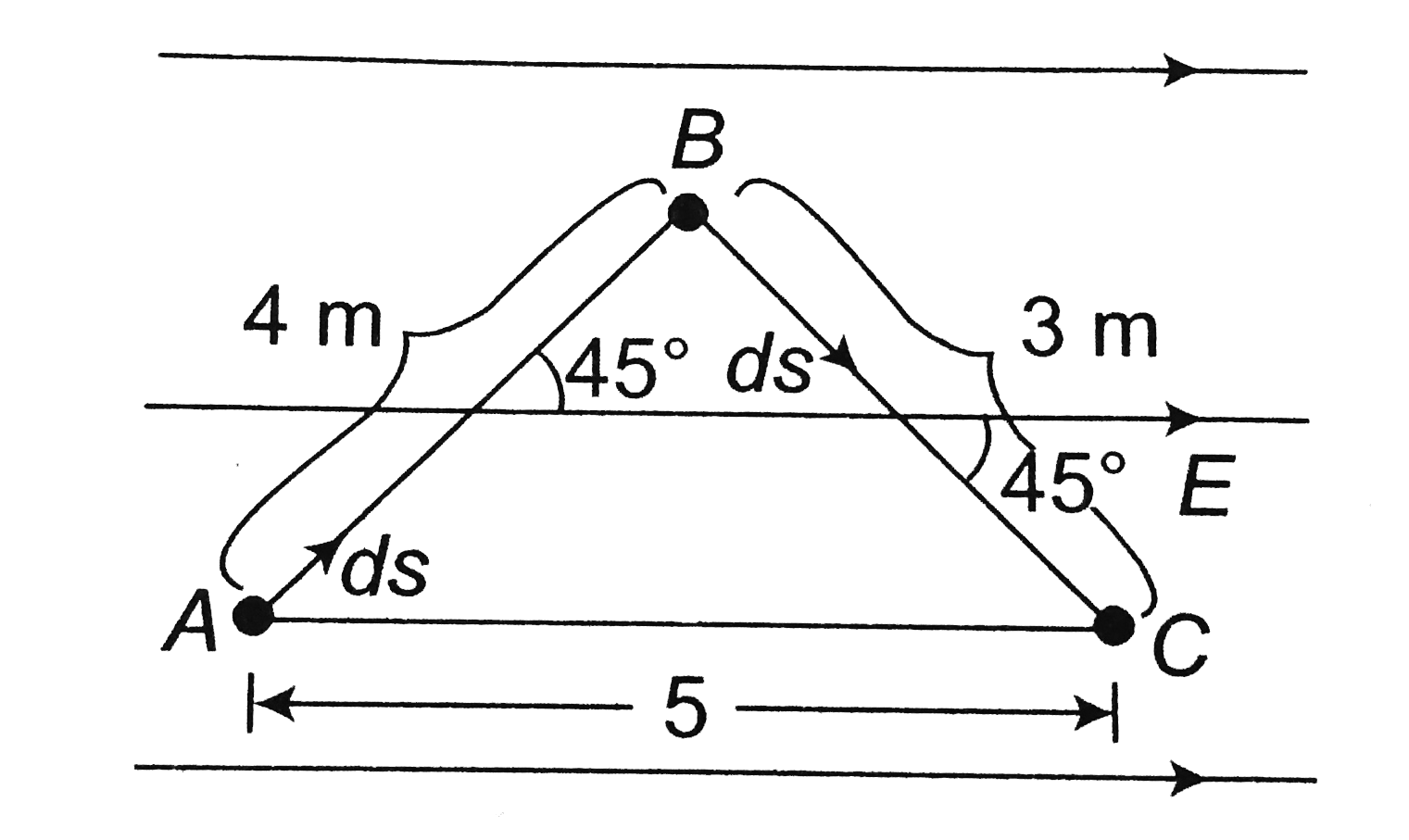 AVA−VC=−∫ABEdscos45∘+∫BCEdscos45∘BVA−VC=−∫ABEdscos45∘−∫BCEdscos45∘CVA−VC=5EDVC−VA=5E
AVA−VC=−∫ABEdscos45∘+∫BCEdscos45∘BVA−VC=−∫ABEdscos45∘−∫BCEdscos45∘CVA−VC=5EDVC−VA=5E - Question 2 - Select One
There is a electric circuit as shown in the figure. Find potential difference between points a and b.
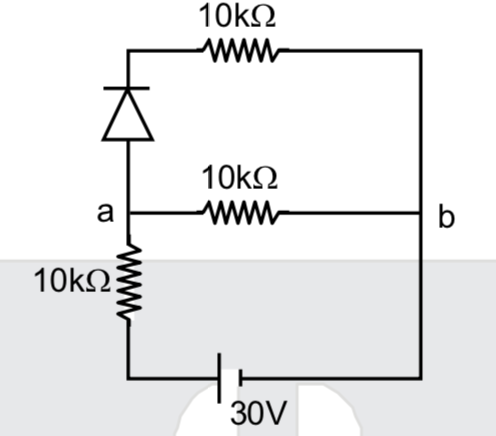 A3VB15VC10VD5V
A3VB15VC10VD5V - Question 3 - Select One
In uniform electric field E=10N/C, find
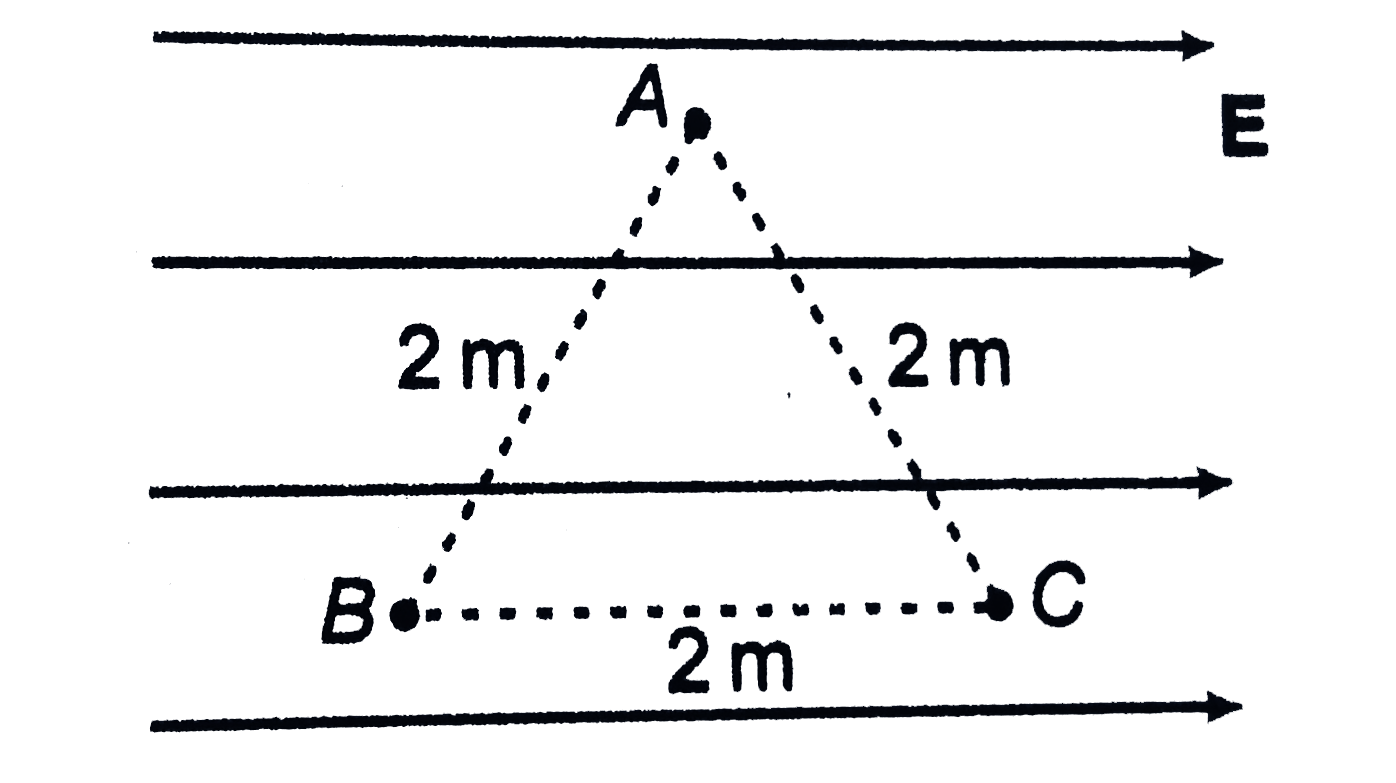
a. VA−VB , b. VB−VCA−10V and 20VB10V and −10VC30V and 20VD−10V and 40V
A test charge q is moved without acceleration from A to C along the path form A to B and then from B to C in electric field E as shown in the figure.
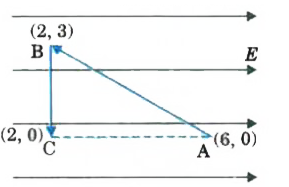
(i) Calculate the potential difference between A and C.
(ii) At which point (of the two) is the electric potential more and why?View SolutionA test charge 'q' is moved without acceleration from A to C along the path from A to B and then from B to C in electric field E as shows in the figure. (i) Calculate the potential difference between A and C. (ii) At which point (of the two) is the electric potential more and why ?
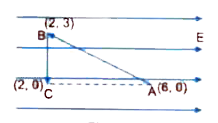 View Solution
View SolutionA proton when released from point A moves to a point B in an electric field. Which of A and B is at a higher potential ? Explain.
If the potential difference between the points A and B is 5 V, find the amount of work done in moving a proton from B to A
(Take charge of proton as +1.6×10−19C).View SolutionAn electric dipole of moment 5×10−8C−m is aligned in a uniform electric field of 1⋅44×104N/C. Calculate potenitial energy of the diople at 60∘ with the direction of electric field.
View SolutionFor uniform electric field, potential difference between the plate is
View Solution

